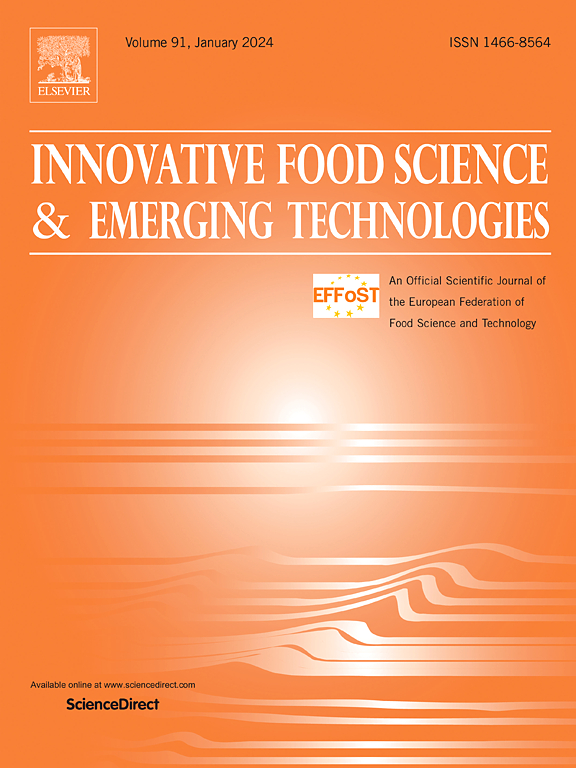Reducing antinutritional compounds in Amaranth using instant controlled pressure drop (DIC): A novel, sustainable processing approach
IF 6.3
1区 农林科学
Q1 FOOD SCIENCE & TECHNOLOGY
Innovative Food Science & Emerging Technologies
Pub Date : 2025-06-26
DOI:10.1016/j.ifset.2025.104098
引用次数: 0
Abstract
Amaranth (Amaranthus hypochondriacus), a gluten-free pseudocereal rich in high-quality protein, holds significant promise for advancing global food and nutrition security. However, its broader adoption remains constrained by antinutritional factors such as tannins, phytates, oxalates, and lectins. This study explores the application of Instant Controlled Pressure Drop (DIC) technology, a thermo-mechanical, green processing technique, to mitigate these compounds in two amaranth varieties: Laura and Criollo. Through a central composite design varying steam pressure (0.1–0.4 MPa) and treatment time (10–90 s), we identified optimal DIC conditions (0.36 MPa, 22 s) that resulted in significant reductions of oxalates (up to 83 % in Laura, 69 % in Criollo), phytates (up to 11 % in Criollo), and effective lectin deactivation. Compared to conventional methods such as blanching, fermentation, or germination, DIC demonstrated superior, rapid, and multi-targeted mitigation of antinutrients while preserving thermolabile bioactive compounds. As a low-water, energy-efficient, and scalable process, DIC presents a promising alternative for enhancing the nutritional quality of amaranth. These findings underscore its potential for industrial integration and the development of functional, value-added food products that align with sustainable food innovation goals.
利用即时控制压降(DIC)减少苋菜中的抗营养化合物:一种新的、可持续的加工方法
苋菜(Amaranthus hypochondriacus)是一种富含高质量蛋白质的无麸质假谷物,对促进全球粮食和营养安全具有重要意义。然而,它的广泛采用仍然受到诸如单宁、植酸盐、草酸盐和凝集素等抗营养因素的限制。本研究探讨了瞬时控制压降(DIC)技术的应用,这是一种热机械的绿色加工技术,以减轻两个苋菜品种:劳拉和克里奥罗的这些化合物。通过改变蒸汽压力(0.1-0.4 MPa)和处理时间(10-90 s)的中心复合设计,我们确定了最佳的DIC条件(0.36 MPa, 22 s),可以显著降低草酸盐(Laura高达83%,Criollo高达69%),植酸盐(Criollo高达11%)和有效的凝集素失活。与传统的方法(如焯水、发酵或发芽)相比,DIC在保存耐热性生物活性化合物的同时,表现出了优越、快速和多目标的抗营养物质缓解。作为一种低水、节能和可扩展的工艺,DIC为提高苋菜的营养品质提供了一个有前途的选择。这些发现强调了它在产业整合和开发符合可持续食品创新目标的功能性、增值食品产品方面的潜力。
本文章由计算机程序翻译,如有差异,请以英文原文为准。
求助全文
约1分钟内获得全文
求助全文
来源期刊
CiteScore
12.00
自引率
6.10%
发文量
259
审稿时长
25 days
期刊介绍:
Innovative Food Science and Emerging Technologies (IFSET) aims to provide the highest quality original contributions and few, mainly upon invitation, reviews on and highly innovative developments in food science and emerging food process technologies. The significance of the results either for the science community or for industrial R&D groups must be specified. Papers submitted must be of highest scientific quality and only those advancing current scientific knowledge and understanding or with technical relevance will be considered.

 求助内容:
求助内容: 应助结果提醒方式:
应助结果提醒方式:


